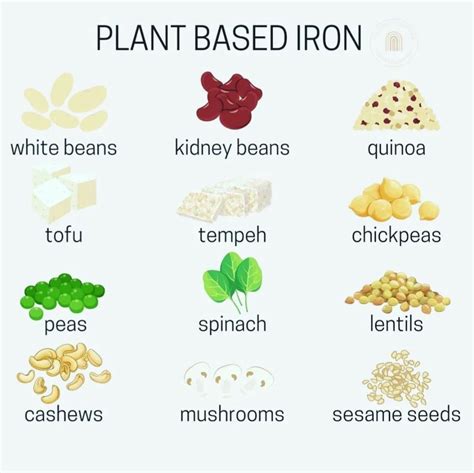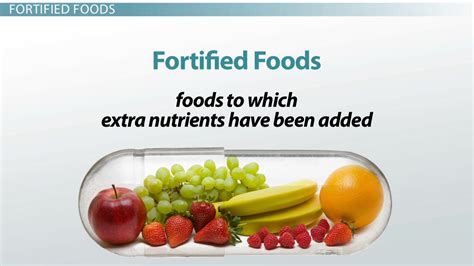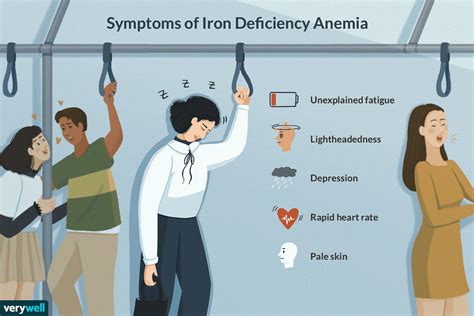Intro
Iron is an essential nutrient that plays a critical role in the production of hemoglobin, a protein in red blood cells that carries oxygen to different parts of the body. Without sufficient iron, the body may not be able to produce enough healthy oxygen-carrying red blood cells, leading to a condition known as iron deficiency anemia. This can cause fatigue, weakness, and shortness of breath, among other symptoms. Fortunately, there are many delicious and nutritious foods that are rich in iron, which can help to prevent or alleviate iron deficiency anemia.
Iron deficiency is a common nutritional disorder that affects millions of people worldwide, particularly women of childbearing age, pregnant women, and young children. It can be caused by a lack of iron in the diet, increased iron requirements, or iron loss due to bleeding or other medical conditions. To maintain good health, it is essential to consume enough iron-rich foods as part of a balanced diet.
A well-planned diet that includes a variety of iron-rich foods can help to ensure that the body gets enough iron to function properly. Iron-rich foods can be categorized into two main types: heme iron sources, which are animal-based, and non-heme iron sources, which are plant-based. Heme iron sources, such as red meat, poultry, and fish, are more easily absorbed by the body than non-heme iron sources, such as beans, lentils, and fortified cereals. However, non-heme iron sources can still provide a significant amount of iron, especially if consumed in large quantities or in combination with vitamin C-rich foods, which can enhance iron absorption.
Animal-Based Iron Sources

Animal-based iron sources, also known as heme iron sources, are generally more easily absorbed by the body than plant-based iron sources. These foods include red meat, poultry, fish, and seafood, which are all high in iron and other essential nutrients like protein, zinc, and B vitamins. Some examples of animal-based iron sources and their iron content per serving include:
- Red meat (beef, lamb, pork): 3-4 milligrams of iron per 3-ounce serving
- Poultry (chicken, turkey): 2-3 milligrams of iron per 3-ounce serving
- Fish and seafood (shrimp, tuna, salmon): 2-3 milligrams of iron per 3-ounce serving
- Organ meats (liver, kidney): 5-10 milligrams of iron per 3-ounce serving
Benefits of Animal-Based Iron Sources
Animal-based iron sources offer several benefits, including high iron content, easy absorption, and a rich source of other essential nutrients. These foods can be incorporated into a variety of dishes, from stir-fries and curries to salads and sandwiches. However, it is essential to consume animal-based iron sources in moderation, as excessive consumption can increase the risk of chronic diseases like heart disease and certain types of cancer.Plant-Based Iron Sources

Plant-based iron sources, also known as non-heme iron sources, are found in a variety of foods, including beans, lentils, peas, nuts, and seeds. These foods are not only rich in iron but also high in fiber, vitamins, and minerals, making them a nutritious addition to a balanced diet. Some examples of plant-based iron sources and their iron content per serving include:
- Beans (kidney beans, black beans, chickpeas): 3-5 milligrams of iron per 1/2 cup cooked
- Lentils: 6-7 milligrams of iron per 1/2 cup cooked
- Peas: 2-3 milligrams of iron per 1/2 cup cooked
- Nuts and seeds (pumpkin seeds, sesame seeds, sunflower seeds): 2-5 milligrams of iron per ounce
Benefits of Plant-Based Iron Sources
Plant-based iron sources offer several benefits, including high fiber content, rich in vitamins and minerals, and low in calories. These foods can be incorporated into a variety of dishes, from soups and stews to salads and stir-fries. Additionally, plant-based iron sources are generally lower in saturated fat and higher in antioxidants than animal-based iron sources, making them a healthier choice for overall health and well-being.Fortified Foods

Fortified foods are products that have been enriched with essential nutrients, including iron. These foods can be a convenient way to increase iron intake, especially for individuals who have difficulty consuming enough iron-rich foods. Some examples of fortified foods and their iron content per serving include:
- Breakfast cereals: 10-18 milligrams of iron per serving
- Energy bars: 5-10 milligrams of iron per serving
- Infant formula: 10-12 milligrams of iron per serving
Benefits of Fortified Foods
Fortified foods offer several benefits, including convenience, high iron content, and a range of essential nutrients. These foods can be incorporated into a variety of meals and snacks, making it easier to maintain a balanced diet. However, it is essential to choose fortified foods that are low in added sugars, salt, and unhealthy fats to maximize their nutritional benefits.Increasing Iron Absorption

Iron absorption can be influenced by various factors, including the type of iron, the presence of other nutrients, and individual characteristics. To increase iron absorption, it is recommended to:
- Consume vitamin C-rich foods (oranges, bell peppers, tomatoes) with plant-based iron sources to enhance absorption
- Avoid consuming tea, coffee, and milk with meals, as they can inhibit iron absorption
- Cook in cast iron cookware to increase iron intake
- Avoid excessive consumption of oxalic acid-rich foods (spinach, beets, rhubarb), which can inhibit iron absorption
Benefits of Increasing Iron Absorption
Increasing iron absorption can have several benefits, including improved iron status, reduced risk of iron deficiency anemia, and enhanced overall health and well-being. By following the tips above, individuals can maximize their iron intake and maintain optimal iron levels.Iron Deficiency Anemia Prevention

Iron deficiency anemia can be prevented by consuming enough iron-rich foods, avoiding excessive consumption of foods that inhibit iron absorption, and maintaining good overall health. Some strategies for preventing iron deficiency anemia include:
- Eating a balanced diet that includes a variety of iron-rich foods
- Avoiding excessive consumption of tea, coffee, and milk
- Cooking in cast iron cookware
- Getting regular health check-ups to monitor iron levels
Benefits of Iron Deficiency Anemia Prevention
Preventing iron deficiency anemia can have several benefits, including improved overall health and well-being, reduced risk of chronic diseases, and enhanced quality of life. By following the strategies above, individuals can reduce their risk of iron deficiency anemia and maintain optimal iron levels.Conclusion and Next Steps

In conclusion, iron is an essential nutrient that plays a critical role in maintaining good health. Consuming enough iron-rich foods, avoiding excessive consumption of foods that inhibit iron absorption, and maintaining good overall health can help to prevent iron deficiency anemia. By following the tips and strategies outlined above, individuals can maximize their iron intake, reduce their risk of iron deficiency anemia, and maintain optimal iron levels.
We invite you to share your thoughts and experiences with iron deficiency anemia and iron-rich foods in the comments below. If you found this article helpful, please share it with your friends and family to help spread awareness about the importance of iron for good health.
What are the symptoms of iron deficiency anemia?
+The symptoms of iron deficiency anemia include fatigue, weakness, shortness of breath, pale skin, and poor appetite. If left untreated, iron deficiency anemia can lead to more severe health problems, such as heart problems and poor pregnancy outcomes.
What are the best iron-rich foods for vegetarians and vegans?
+Some of the best iron-rich foods for vegetarians and vegans include beans, lentils, peas, nuts, and seeds. These foods are not only high in iron but also rich in fiber, vitamins, and minerals, making them a nutritious addition to a plant-based diet.
How can I increase my iron absorption?
+To increase iron absorption, consume vitamin C-rich foods (oranges, bell peppers, tomatoes) with plant-based iron sources, avoid consuming tea, coffee, and milk with meals, and cook in cast iron cookware. Additionally, avoid excessive consumption of oxalic acid-rich foods (spinach, beets, rhubarb), which can inhibit iron absorption.
